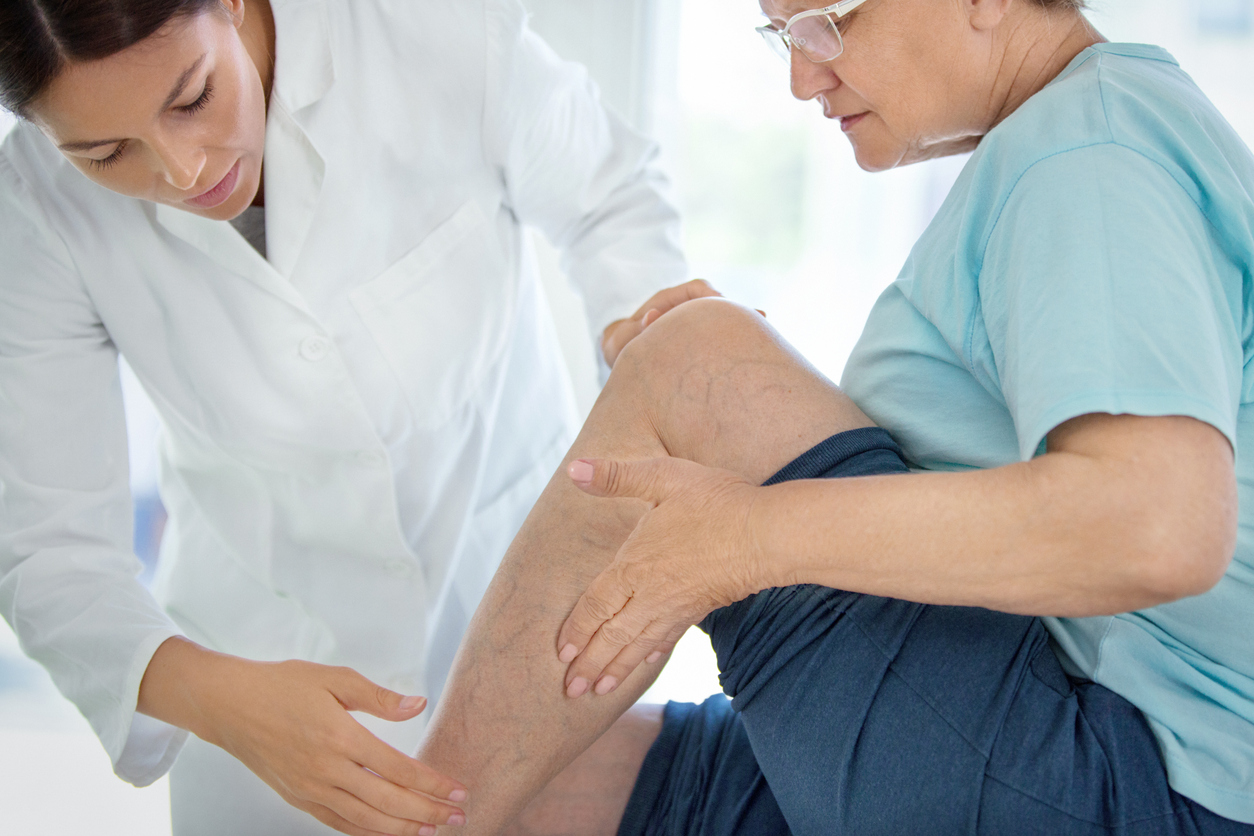
Endoscopic Venous Laser Therapy vs. Radiofrequency Ablation
Varicose veins are often a painful condition. Your veins may become enlarged as a result of abnormalities in venous circulation. Varicose veins are typically located on the lower legs, and many people with this condition find them unsightly. In addition to the protrusion and discoloration of the veins on your legs, you can also experience heaviness and achiness in the legs, which can make work and daily activities much more difficult than it should be.
Fortunately, treatments are available for varicose veins that have proven to be effective. Two of the most popular treatments are endoscopic venous laser therapy (EVLT) and radiofrequency ablation (RFA). Learn more about your options and get an idea of which might be best for you with this handy EVLT vs. RFA comparison.
Endoscopic Venous Laser Therapy
Put simply, endoscopic venous laser therapy uses a laser to reduce varicose veins. How this works and why this works is a bit more complicated. Varicose veins are caused by nearby veins allowing backwards flow or reflux. The blood flows backwards to stretch out nearby veins–with these becoming “varicose veins”. To treat this problem, endoscopic venous laser therapy begins by inserting a small laser fiber into the afflicted vein–the vein that is the source of backwards flow.
When the heat from a laser is applied, it boils the blood, heating the vein. This causes the refluxing vein to close. Eventually, scar tissue will form, completely sealing off the vein. Since blood has nowhere else to go when the vein is sealed off, it will start to flow through the surrounding normal veins instead. Once the source of backwards flow is eliminated, you should see the swelling go down and pain decrease.
Radiofrequency Ablation
Radiofrequency ablation is a slightly different process that accomplishes the same result. A small catheter is inserted into the target vein after applying local anesthesia. Instead of using a laser, radiofrequency waves are converted to heat that is applied directly to the inner walls of the abnormal veins in 20-second intervals, and overlapping segments to heat and ablate the vein.
Segments of the vein will begin to close, and the catheter is pulled out along the way. Once the entire vein is ablated, blood will automatically begin to flow through healthier veins. The ablated vein will eventually turn into scar tissue and become absorbed.
We prefer to wrap the treated leg for 48-72 hours. However patients may return to work literally within an hour . Most patients can expect to be back to normal function in 24-48 hours.
Which is Better?
Determining which of these procedures is better can be a tough call. Both accomplish the same result and use similar tactics to accomplish it–the application of heat to the walls of the source veins. The primary difference is the heat source. EVLT uses a laser, while RFA uses radiofrequency waves. Each can be effective. However, radiofrequency waves tend to be safer, more effective in the long term, and do not create the pain that patients experience with EVLT.
Use of laser in EVLT will take a greater toll. The procedure can be painful and leave the legs bruised. The RFA method generally causes less bruising to your legs, which subsequently leads to a less painful recovery. If you’re trying to maximize comfort and minimize recovery time with your operation, RFA is the superior option. Keep in mind that the postoperative care is virtually the same. The primary difference is your recovery experience.
RFA Treatment at Vegas Valley Vein Institute
If you’re looking for a recovery that’s as pain-free as possible, the choice between EVLT vs. RFA is easy. Radiofrequency ablation treatment is significantly less painful during the procedure as well as in the recovery period.
RFA is one of the primary treatment modalities utilized in Henderson at the Vegas Valley Vein Institute. Doctor Simon has the experience you can count on. Schedule your appointment today!
MyBlog
itstitle
excerptsa
online order androxal generic australia
cheapest buy androxal generic germany
cheap androxal generic androxals
buying enclomiphene uk london
buy enclomiphene uk online
get enclomiphene australia cheap
discount rifaximin cheap drugs
lowest prices on generic rifaximin
rifaximin comprar peru
cvs xifaxan prices
cheap xifaxan without a prescription
how to order xifaxan cheap store
buy staxyn australia suppliers
buy staxyn cheap pharmacy
cheapest buy staxyn price australia
buying avodart purchase australia
cheapest buy avodart price on prescription
ordering avodart usa generic
dutasteride manchester uk
how to buy dutasteride generic new zealand
how to buy dutasteride canada online order
purchase flexeril cyclobenzaprine price on prescription
online order flexeril cyclobenzaprine generic germany
purchase flexeril cyclobenzaprine generic online canada
online order gabapentin cost without insurance
canadian female gabapentin
discount gabapentin cheap where
Online fildena no perscription
cheapest buy fildena australia online no prescription
purchase fildena american express canada
itraconazole online without prescription canada
get itraconazole australia pharmacy
buy cheap itraconazole spain over the counter
kde koupit kamagra online
jak mohu objednat kamagra bez perscrption
comprar kamagra contra reenbolso
kamagra 50 mg low cost
sans ordonnance kamagra sens prescrire
où acheter kamagra aux états-unis sans ordonnance